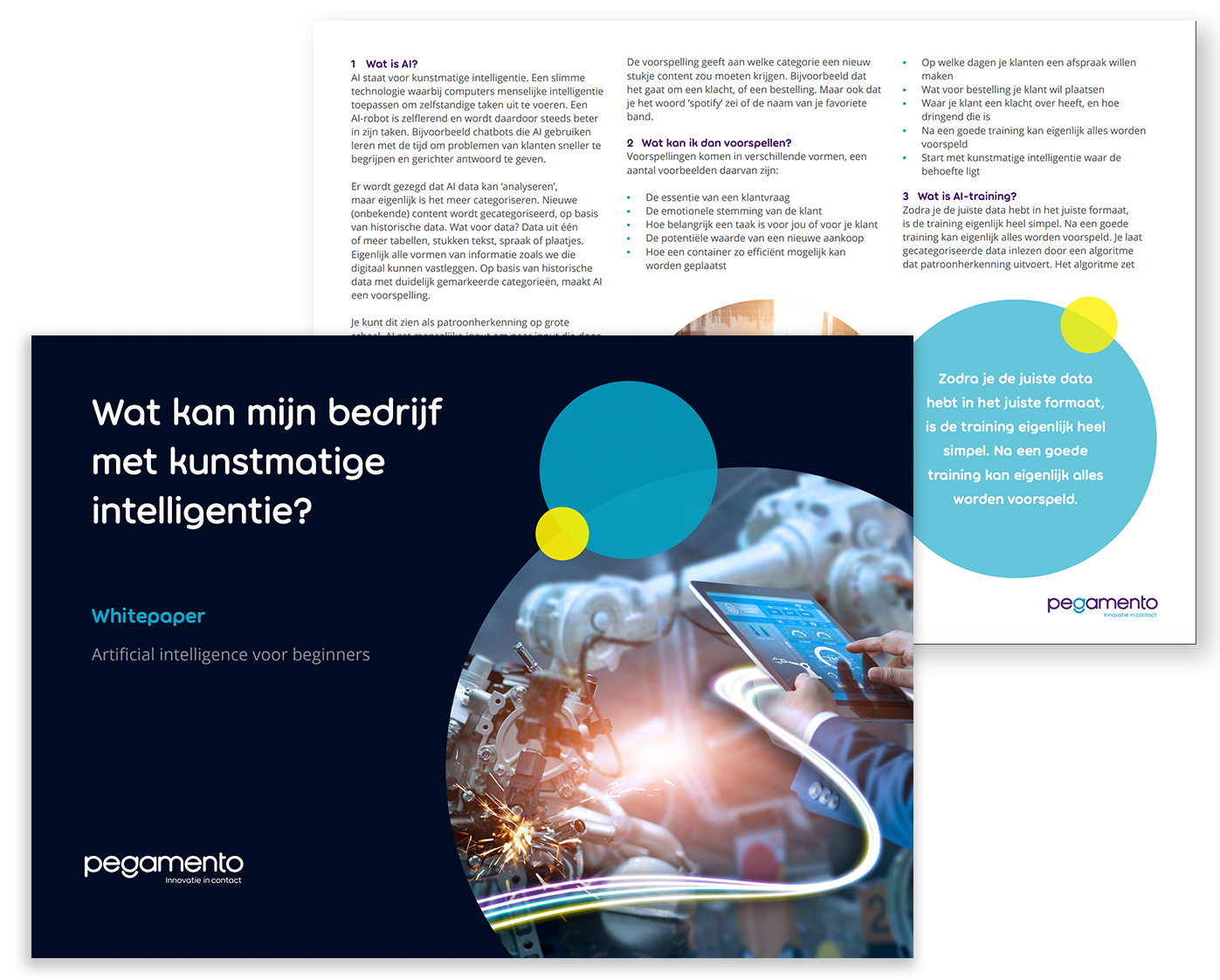ChatGPT. It's a word you've probably seen a lot on your LinkedIn timeline lately: a language model based on generative AI for generating text. ChatGPT is not the only tool using this form of artificial intelligence. More and more tools are being created, and this type of AI is increasingly being integrated into search engines, office applications and social media platforms, among others. Generative AI is an emerging field that pushes the boundaries of human creativity and offers innovative possibilities. But how? In this blog post, we explore the different aspects of generative AI and how it can add value to your business.
What is generative AI?
Let us first consider what generative AI actually is. The technology refers to a branch of artificial intelligence that focuses on creating new content. Unlike traditional AI, which often focuses on solving problems or performing specific tasks, this form has a more creative bent. It uses complex algorithms and deep learning techniques to generate new output from existing data. ChatGPT, for example, collects existing texts and uses these to create completely new stories.
It can be applied to various fields such as art, music, writing and design. For example, the technology uses large volumes of training data to understand patterns and trends. It then uses this understanding to generate new content that is similar to the input, yet original and unique.
Generative models can:
- Generate texts based on a complex instruction. These texts are convincing and make use of a given context.
- Generate images based on a description. These images can be created in a variety of styles and on a variety of subjects.
- Generate audio based on the description of a particular music style and tempo.
- Generate code for computer programs.
- Design new materials or co-develop new medications
4 applications of generative AI in your business
Generative AI can be a great addition to your daily work. For example, you can use it to get new creative ideas or to produce something professional in less time. We have collected a number of application examples for you.
Improving product development
Using complex algorithms and deep learning techniques, generative AI can generate new designs based on existing data and parameters. This allows you to quickly explore and evaluate new concepts, reducing the time and cost of traditional prototyping. The result? Faster time to market and innovative products that meet your customers' needs. Consider Dall-e, which generates non-existent images, or ChatGPT, which can provide text for an invitation based on your prompt.
Personalising the customer experience
The technology can help provide a more personalised customer experience. By analysing customer data and generating individual recommendations, you can deliver tailored products or services that better meet your customers' needs and preferences. This can result in higher customer satisfaction and loyalty and may even help you attract new customers.
Optimising business processes
Generative AI can also be used to optimise your business processes. By analysing large quantities of data, it can identify patterns and trends that can lead to more efficient operations. For example, it can help predict supply and demand, optimise inventory levels and predict maintenance needs. The result is cost savings and improved operational performance.
Stimulating innovation and creativity
It is also a source of innovation and creativity for your business. It can help you explore and generate new ideas, challenging and extending human thinking. By combining machine learning algorithms with human input, you can develop ground-breaking solutions and designs that are a step ahead of your competitors. This fosters a culture of innovation within your organisation, driving growth and differentiation.
You might also be interested in reading: How applying artificial intelligence grows your business
But what about ethics and accountability?
Generative AI is spreading rapidly. The technology is generating much excitement, and there is a lively debate about the opportunities and risks involved. It looks set to be a success story, but caution is needed.
Its use raises issues of ethics and accountability. When generating content, it is important to consider authorship rights and accountability in relation to the generated output. We also need to ensure that generative AI does not negatively impact areas such as privacy, bias and human interaction.
When it comes to bias, the risks relate to the data on which the models are trained. The data may contain biases and incorrect assumptions, just as there are biases and incorrect assumptions in real life. Generative AI does not judge or adjust this data. Any adjustments need to be made by humans (and this is already happening in the training of AI). It is essential to build transparency, accountability and ethical guidelines into the use of technology in your business processes.

Will you be there? The brains behind AI
Artificial intelligence is a powerful, but also potentially dangerous, tool to address challenges within organisations. How can we use AI responsibly, and what limits should we set to maximise its benefits?
Find out what various experts have to say on the use of AI in the workplace. Register now >
Explore what generative AI can do for you
Generative AI offers opportunities to innovate, improve efficiency and increase customer satisfaction. And there are many more ways to use this technology in your business. Check it out for yourself by playing around with tools like ChatGPT (for text), Boomy (for music) and Dall-e (for images). What does the existence of this technology mean in terms of what we do and how we work?
By exploring the potential of generative AI, you can transform your business and gain a competitive advantage. That is, if you follow ethical and responsible practices when using this technology. So what are you waiting for? Explore the world of generative AI and let your business thrive in the age of artificial intelligence.

Artificial intelligence in your business
We are implementing AI in different ways and at different scales in organisations across a range of industries. In this white paper, we discuss our findings, recommendations and implementation strategies. Download it for free.

